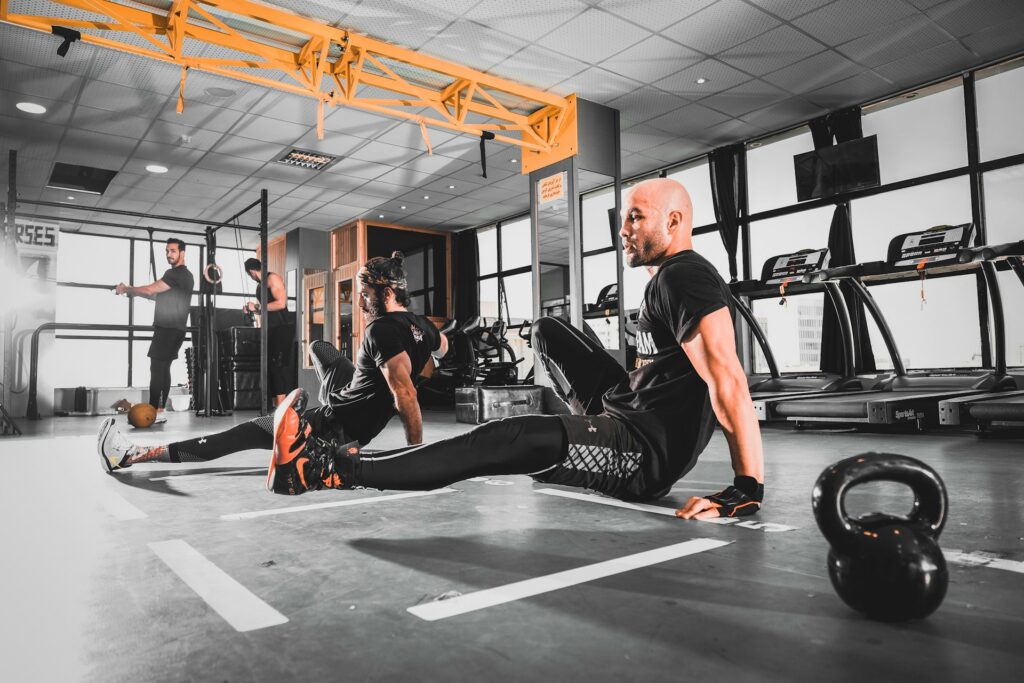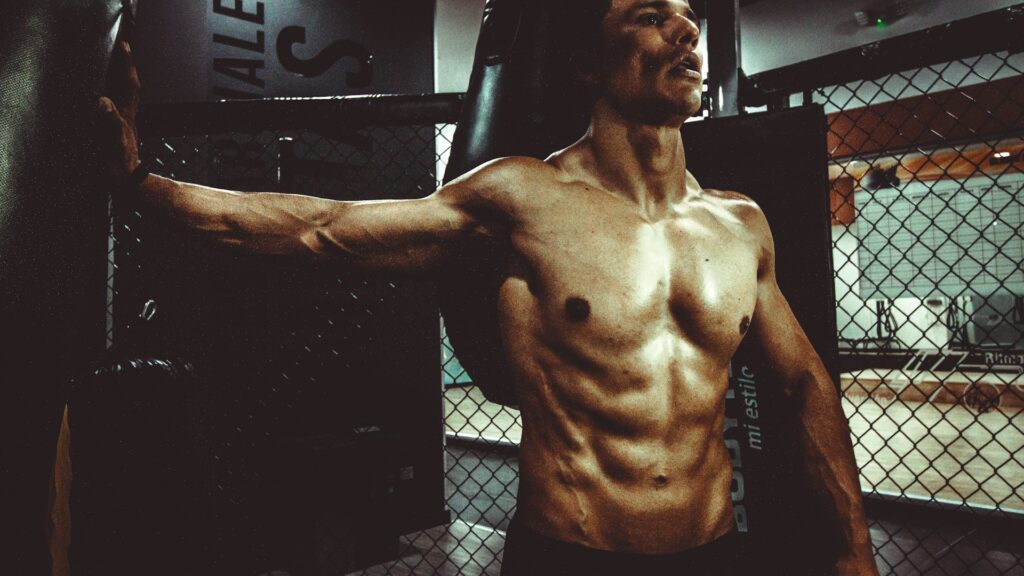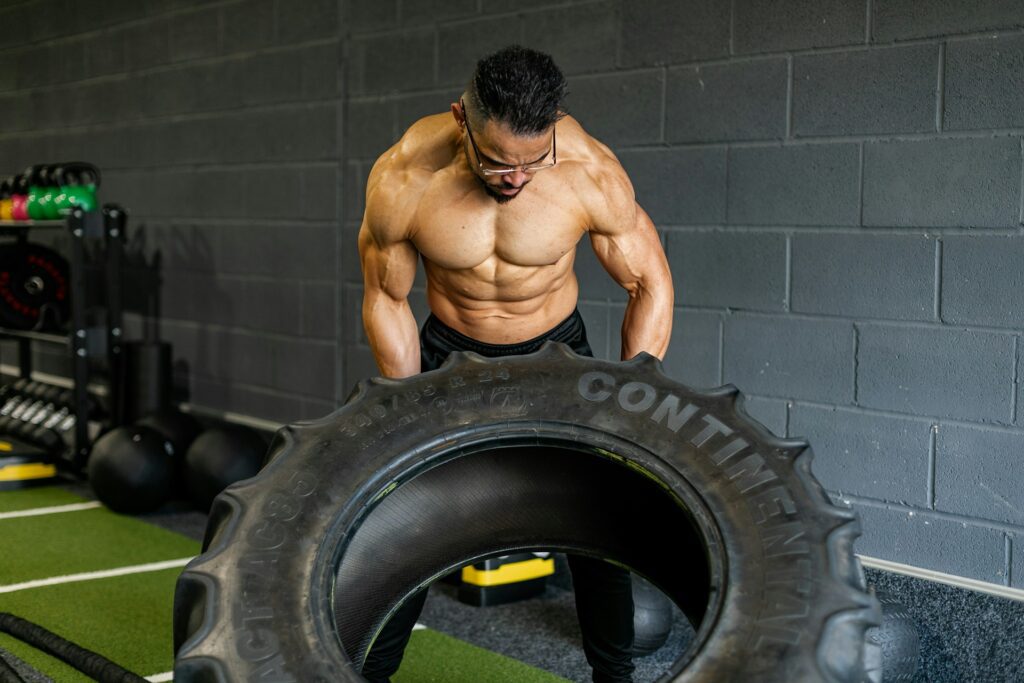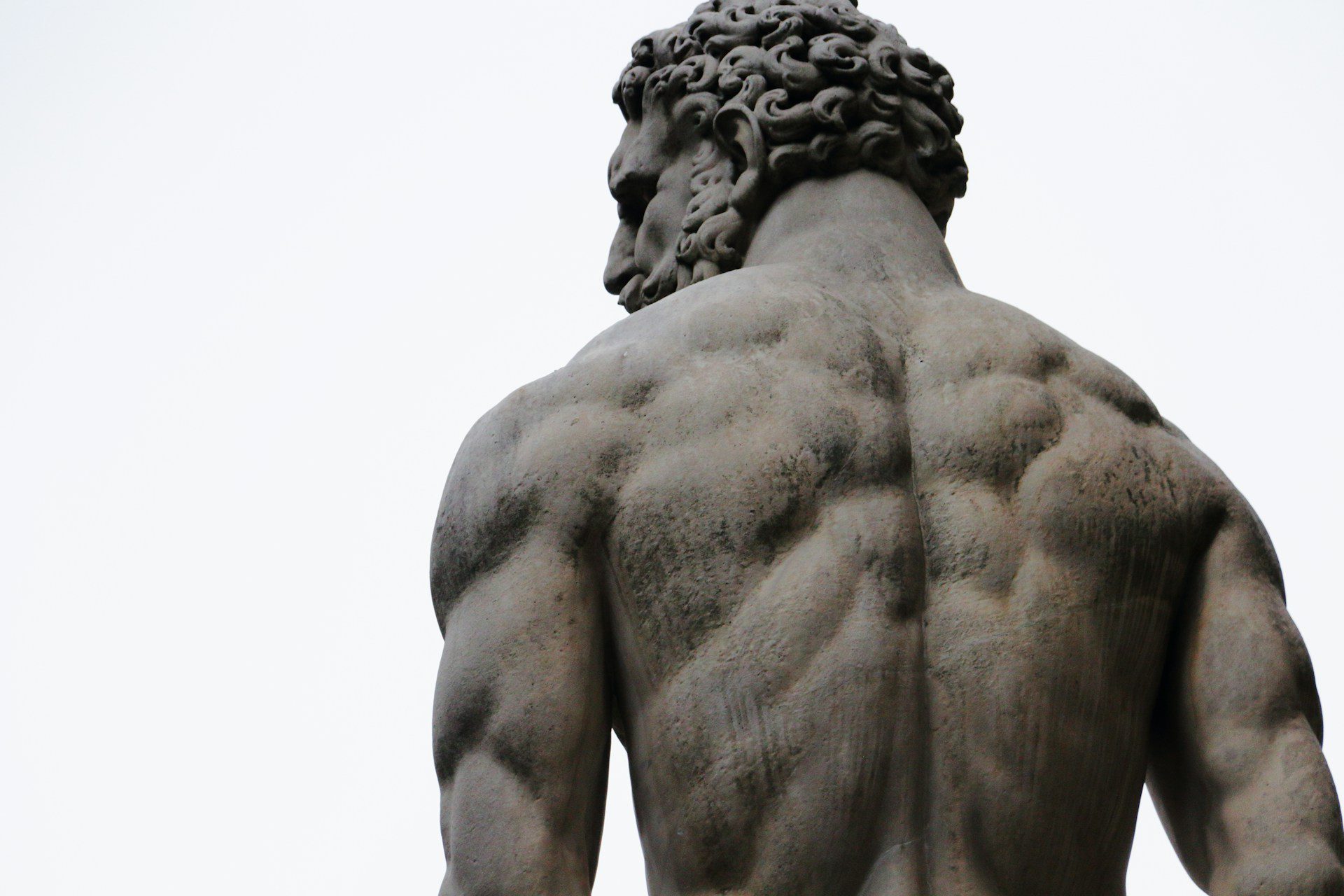Throughout history, the ideal male body has evolved from sculptures of Greek gods to muscle-bound bodybuilders and now to agile, high-performing athletes. In this era, strength and aesthetics are no longer the only indicators of an ideal physique. Today’s ideal male body is about a trifecta: function, fitness, and power. It’s not just about how you look in the mirror but how your body performs under pressure, adapts to challenges, and maintains vitality across decades.
From Ancient Statues to Modern Fitness Icons
Take a stroll through any ancient museum, and you’ll find statues carved with broad chests, narrow waists, and perfectly proportioned muscles. These were early representations of masculine ideals—strong, poised, and symmetrical. Fast forward to the 1980s and 1990s, and you’d be hard-pressed to find a poster or movie without bulging biceps and shredded six-packs. Arnold Schwarzenegger and Sylvester Stallone weren’t just actors; they were icons of the male aesthetic.
But modern fitness icons—think Chris Hemsworth, David Goggins, or even functional athletes like Mat Fraser—bring a different vibe. It’s no longer just about size; it’s about movement, endurance, recovery, and versatility. People are realizing the importance of a body that’s not just camera-ready but also life-ready.
The Shift from Aesthetic to Functional Fitness
Why the shift? Simple. Aesthetic fitness may look good, but it doesn’t always perform well. Imagine a bodybuilder trying to hike a mountain or chase after their kid in the park—they might struggle more than a CrossFitter or endurance athlete with a leaner, more dynamic build.
Functionality means being able to handle real-life demands: lifting, running, jumping, even sitting or standing for long periods without pain. Today’s ideal male body combines lean muscle mass, cardiovascular health, and agility to form a complete physical package that goes far beyond the superficial.
What Does ‘Functional’ Really Mean?
You’ve probably heard the buzzword “functional fitness” thrown around a lot—but what does it really mean? At its core, it’s about preparing your body for real-life movements and physical challenges. It’s not about isolating muscles in a gym; it’s about training your body to move as a unit.
Strength with a Purpose
Think about lifting groceries, sprinting to catch a train, or picking up a child—all of these tasks require coordination, balance, and strength. Functional strength involves core stability, joint alignment, and balanced muscle development to perform these tasks safely and efficiently.
Instead of just bench pressing heavy weights, functional fitness emphasizes compound lifts like deadlifts, kettlebell swings, squats, and pull-ups. These exercises recruit multiple muscle groups, mimic natural movements, and develop real-world strength.
Everyday Movements and Athletic Performance
Functional fitness also translates to improved athletic performance. Whether you’re playing a pickup game of basketball, going for a weekend hike, or swimming laps, a functional body reacts quickly, moves fluidly, and sustains performance longer.
It’s the difference between looking like you can run fast and actually being able to run fast. The focus shifts from vanity to ability. It’s about using your body as a tool—not just a sculpture—and making sure it’s primed for both the expected and the unexpected.
The Fit Factor: Fitness Beyond Looks

Fitness isn’t just skin-deep. A chiseled chest and ripped arms may turn heads, but they don’t tell the whole story. True fitness is a combination of cardiovascular health, flexibility, mobility, and endurance. It’s the foundation of energy, mental clarity, and long-term health.
Cardiovascular Health and Endurance
A powerful heart pumps more blood with each beat, feeding muscles, organs, and the brain with oxygen-rich blood. That’s why running, swimming, cycling, and even brisk walking are essentials in any well-rounded fitness routine. Good cardio doesn’t just extend your life; it enhances the quality of it.
Endurance also helps you power through longer workouts, stay active during the day, and recover quicker. Whether you’re doing a grueling workout or just a long day of errands, stamina ensures you can keep going without crashing.
Flexibility, Mobility, and Joint Health
Many men ignore flexibility and mobility, thinking they’re only for yogis. Big mistake. A tight hamstring or stiff shoulder can ruin your training and your posture. Flexibility allows for better range of motion, and mobility ensures your joints move as they should.
Mobility drills, dynamic stretching, and foam rolling aren’t just for recovery—they’re for performance, too. When your body moves well, you lift better, run smoother, and reduce your risk of injury. Joint health, especially for the knees, hips, and shoulders, is critical to aging well and staying active.
Power: The Core of Physical Dominance
Power isn’t just about how much you can lift; it’s about how quickly and explosively you can move that weight. In the world of fitness, power is the bridge between strength and speed. It’s what allows athletes to sprint, jump, punch, and lift with precision and intensity.
Muscle Mass vs. Functional Strength
A lot of guys chase size, thinking that bigger is better. While muscle mass is important, it doesn’t automatically equate to strength. Functional strength focuses on what your body can do, not just how it looks. Olympic lifters might not have the biggest arms, but they can out-lift most bodybuilders.
The key is muscle density and neurological efficiency—training your muscles and nervous system to work together. Power-based exercises like cleans, snatches, and plyometrics train both your muscles and your brain to produce force quickly.
Explosiveness and Athletic Power
Want to jump higher, sprint faster, or hit harder? That’s explosiveness—a key component of power. Explosive power translates into better sports performance and real-life applications. Exercises like box jumps, medicine ball slams, and sprint intervals help develop this quality.
Power makes you feel more alive, more capable, and more resilient. It adds a dynamic edge to your fitness, one that goes beyond static lifts and into the realm of athletic excellence.
Body Composition: The Balance of Muscle and Fat

When you think of the ideal male body, what comes to mind? Shredded abs? Bulging biceps? While these might be visual markers, true excellence lies in optimal body composition—a balanced ratio of lean muscle mass to body fat. Achieving this balance doesn’t just make you look better; it enhances how your body performs, recovers, and ages.
Ideal Body Fat Percentage for Men
Let’s talk numbers. The ideal body fat percentage for men varies depending on goals, but a range of 10-15% is typically considered lean and healthy. Professional athletes often range from 6-13%, while recreationally fit men maintain around 12-18%.
Too little fat and you risk hormonal imbalances, energy crashes, and compromised immunity. Too much fat, especially visceral fat around the abdomen, increases the risk of diabetes, heart disease, and metabolic issues. The goal isn’t zero fat—it’s healthy fat levels that support function and vitality.
Regular body fat assessments—whether through DEXA scans, calipers, or smart scales—help track progress and fine-tune your training and nutrition.
Lean Muscle Mass and Metabolism
Lean muscle mass is your body’s engine. The more muscle you have, the more calories you burn—even at rest. Muscle boosts your metabolism, supports bone density, and improves insulin sensitivity.
To build and preserve lean muscle, resistance training is key. Aim for a mix of heavy lifting (low reps, high weight), hypertrophy training (moderate reps, moderate weight), and bodyweight exercises for endurance and mobility.
Building muscle also improves the way you move, look, and feel. It sculpts the body into that ideal V-shape—broad shoulders, defined chest, and tapered waist. But more importantly, it prepares your body for life’s physical demands.
Nutrition: Building and Fueling the Ideal Body
You can train hard, but if your nutrition isn’t on point, progress will be slow—or nonexistent. Your body needs fuel to grow, recover, and perform. Think of nutrition as the foundation that supports all your hard work in the gym and in life.
Macronutrients and Muscle Growth
There are three macronutrients—protein, carbohydrates, and fats—and each plays a role in shaping the ideal male body.
- Protein: Essential for muscle repair and growth. Aim for 0.8–1 gram per pound of body weight per day. Prioritize lean sources like chicken, fish, eggs, Greek yogurt, and plant-based options like lentils and tofu.
- Carbohydrates: Fuel your workouts and replenish glycogen stores. Whole grains, fruits, vegetables, and legumes are your friends.
- Fats: Don’t fear them. Healthy fats from avocados, nuts, seeds, olive oil, and fatty fish support hormone production, brain health, and joint function.
A balanced approach is key. Crash diets and extreme plans might offer quick results, but they often sacrifice muscle, energy, and mental clarity.
Micronutrients and Recovery
While macronutrients get the spotlight, micronutrients are the silent heroes. Magnesium aids in muscle function, zinc supports testosterone levels, and vitamin D contributes to bone health and immunity.
Focus on a colorful diet full of vegetables, fruits, whole grains, and diverse protein sources to get your vitamins and minerals. Consider supplements if you have deficiencies, but always prioritize whole foods.
Hydration is another crucial piece. Even mild dehydration can impair performance, energy levels, and recovery. Aim for at least 3 liters of water per day, more if you’re sweating heavily.
Training Approaches for a Powerful Physique

There’s no one-size-fits-all approach to building the ideal male body, but certain principles rise above trends. The best training program builds muscle, burns fat, and enhances mobility and endurance—all while keeping your joints and central nervous system healthy.
Compound Movements for Full-Body Strength
Compound exercises—like deadlifts, squats, bench presses, and pull-ups—work multiple muscle groups at once. They mimic real-life movements, burn more calories, and build functional strength. These should form the backbone of any program aiming for performance and aesthetics.
Focus on progressive overload: gradually increasing weights, reps, or intensity over time. This stimulates muscle growth and ensures continual improvement.
Add in unilateral movements (like lunges or single-arm rows) to correct imbalances and improve coordination.
HIIT, Conditioning, and Athletic Drills
High-Intensity Interval Training (HIIT) is perfect for burning fat without sacrificing muscle. Short bursts of effort followed by brief rest periods torch calories and improve cardiovascular fitness.
Incorporate agility ladders, sprints, sled pushes, kettlebell swings, or battle ropes to train like an athlete. These drills increase power, endurance, and mental grit.
Mix strength training with athletic conditioning to create a body that’s not only strong but also fast, agile, and explosive.
Recovery and Sleep: The Forgotten Pillars
Progress doesn’t happen during workouts—it happens afterward. Without proper recovery, your muscles won’t grow, your energy will tank, and injuries will creep in. This is where sleep, rest, and recovery techniques come into play.
The Role of Sleep in Muscle Growth
Sleep isn’t just for rest—it’s a growth phase. During deep sleep, your body releases growth hormone, repairs tissues, and resets the brain. Aim for 7–9 hours per night, and prioritize sleep quality by limiting screens before bed, keeping your room cool, and developing a relaxing bedtime routine.
Chronic sleep deprivation kills gains. It reduces testosterone, impairs recovery, and increases cortisol—a hormone linked to fat storage and muscle breakdown.
Importance of Active Recovery
Recovery isn’t just lying on the couch. Active recovery—light movement on rest days—keeps blood flowing, flushes toxins, and promotes healing. Think walking, stretching, swimming, or yoga.
Foam rolling, massage therapy, and contrast baths can also accelerate muscle repair. Don’t forget to listen to your body—if you’re constantly sore, irritable, or plateauing, you might be overtraining.
Recovery is where the magic happens. Treat it like a workout—schedule it, track it, and respect it.
Mindset and Discipline: The Mental Game
When we talk about building the ideal male body, we often focus on workouts and diet. But without the right mindset, none of that matters. Physical transformation begins in the mind. Your mental toughness, discipline, and consistency are the real game-changers.
Consistency Over Motivation
Motivation is fleeting. One day you feel pumped, the next you’re drained. That’s why consistency must be the cornerstone of your journey. Building a powerful body requires showing up even when you don’t feel like it. Discipline beats motivation every time.
Set a schedule and stick to it. Whether it’s early morning lifts or post-work runs, make it non-negotiable. Think of it like brushing your teeth—you do it because it’s necessary, not because you feel like it.
Small daily actions compound into massive results over time. Tracking progress, keeping a fitness journal, and celebrating milestones (not just end goals) help maintain momentum and accountability.
Setting Realistic and Long-Term Goals
Your goal shouldn’t just be “get ripped.” That’s too vague. Instead, break it down: “Gain 5 lbs of lean muscle in 10 weeks” or “Improve deadlift by 25 lbs.” Realistic, measurable goals keep you focused.
Think long-term, too. It’s not about peaking for one summer; it’s about building a strong, functional body that lasts decades. Longevity should be a top priority. Avoid shortcuts and extreme measures—they rarely work and usually cause burnout or injury.
Create a clear vision of who you want to become and align your daily actions with that identity. It’s not just what you do—it’s who you are becoming.
Real-Life Examples of Functional and Powerful Physiques

The internet is filled with shredded influencers, but let’s focus on people whose bodies do more than just look good. Real-life examples show us that function, fitness, and power can coexist—and often outperform pure aesthetics.
Athletes vs. Bodybuilders
Look at elite athletes: NFL players, MMA fighters, CrossFit champions, Olympic lifters. These men carry a balance of speed, strength, and agility. They may not have perfect six-packs 24/7, but they can run, lift, jump, and fight better than most.
Compare that to traditional bodybuilders—huge muscles, but often limited mobility and performance. Many bodybuilders follow “bro splits” focusing on isolating muscles for size, not function.
This isn’t to knock bodybuilding—it’s a discipline in its own right. But if your goal is an ideal body that performs as well as it looks, the athlete’s blueprint is far more effective.
Military and Special Forces Conditioning
Look no further than military personnel, especially special forces. These men train for real-world challenges—long marches, endurance, strength under stress, and survival in extreme conditions. Their bodies are lean, powerful, and conditioned to endure.
They do functional movements, run for miles, carry heavy loads, and perform high-stress tasks with minimal rest. This kind of fitness is born from necessity. It’s not about flexing in a mirror—it’s about surviving and dominating in real-world situations.
Studying how these professionals train can teach us a lot about building a body that is truly capable and versatile.
Supplements: Enhancing, Not Replacing
Supplements are often seen as shortcuts, but they’re not magic bullets. The ideal male body is built on training and whole foods. That said, the right supplements can enhance recovery, boost performance, and fill nutritional gaps.
Protein, Creatine, and Pre-Workout Essentials
- Protein Powder: Great for hitting daily protein goals, especially post-workout. Whey, casein, or plant-based options are all effective.
- Creatine Monohydrate: One of the most studied and effective supplements for muscle growth, strength, and recovery.
- Pre-Workout: Helps with focus and energy, especially on tough training days. Look for products with caffeine, beta-alanine, and citrulline malate.
Remember, these are supplements—they’re meant to supplement, not replace, real food and consistent training.
Natural Boosters and What to Avoid
Natural boosters like zinc, magnesium, and vitamin D support testosterone and recovery, especially if you’re deficient. Adaptogens like ashwagandha can help manage stress and cortisol levels.
But be wary of products that promise extreme fat loss or muscle gain overnight. Fat burners, testosterone boosters, and unregulated SARMs often come with serious side effects.
Always prioritize safety, research what you’re putting in your body, and consult a healthcare provider if unsure. A supplement should never be a crutch—it should be a small edge that supports your bigger goals.
Common Myths About the Ideal Male Body
With so much information out there, it’s easy to fall for myths that sound legit but hold you back. Let’s bust a few common ones.
Bigger Always Means Stronger?
Not always. A guy with massive arms might look strong, but he could be out-lifted by someone leaner with better technique and neural efficiency. Strength depends on more than size—it’s about leverage, coordination, and how efficiently your muscles and nervous system work together.
Focus on getting stronger, not just bigger. Powerlifters, Olympic lifters, and gymnasts are often smaller than bodybuilders but can produce significantly more force.
Abs = Peak Fitness?
Having visible abs doesn’t necessarily mean you’re fit. In fact, some of the fittest athletes don’t have razor-sharp six-packs all year round. Abs are often more about low body fat than core strength or overall fitness.
Functional fitness involves a strong, stable core—not just visible abs. Planks, carries, and rotational work develop real core power. Aim for performance, not just definition.
Tailoring the Ideal Body to Your Lifestyle
Let’s be real—not everyone has 2 hours a day to train or access to elite coaches. But that doesn’t mean you can’t build your best body. The key is personalization—matching your training and goals to your life.
Customizing Goals for Occupation and Daily Life
If you’re a busy professional, maybe three solid strength sessions per week with some mobility work fits your schedule. If you’re a manual laborer, your job might already give you plenty of physical activity, so recovery and nutrition may become the priority.
If you’re in a high-stress job, fitness can help manage mental fatigue. Tailor your plan to your energy levels, sleep, and work-life balance. Consistency trumps intensity.
Sustainable Fitness Over Time
Fitness isn’t an 8-week challenge—it’s a lifelong pursuit. Choose a routine you enjoy, not one you dread. It’s better to train three times a week for a year than six times a week for a month before burning out.
Adapt your goals as life changes. In your 20s, it might be max lifts. In your 40s, joint health and endurance. In your 60s, mobility and strength preservation. The ideal male body evolves—but its core is always rooted in function, fitness, and power.
Tools and Tech for Tracking Progress

In today’s digital age, fitness and technology go hand in hand. The right tools can give you insights, motivation, and data to make smarter decisions about your training and recovery. If you’re serious about building the ideal male body, tracking progress is no longer optional—it’s essential.
Wearables, Apps, and Training Logs
Wearable fitness trackers like WHOOP, Apple Watch, Garmin, and Fitbit go beyond counting steps. They track heart rate variability, sleep quality, recovery scores, and even blood oxygen levels. These metrics help you determine whether you should push hard or take it easy.
Apps like MyFitnessPal, StrongLifts, or Jefit allow you to log workouts, track PRs, and monitor your nutrition. Seeing your reps, weights, and meals over time builds awareness—and awareness leads to improvement.
Don’t overlook the old-school method, either. A notebook or training journal provides a simple yet powerful way to log workouts, jot down how you felt, and analyze what’s working and what’s not.
Using Metrics to Stay on Track
Progress isn’t always visible in the mirror, so tracking metrics like:
- Body fat percentage
- Muscle circumference (arms, chest, legs)
- Lifting stats (bench, squat, deadlift)
- Resting heart rate
- Sleep hours
- Step count
…helps keep you grounded. Numbers don’t lie, and they offer tangible proof of progress even when visual changes seem slow.
These tools also provide motivation. Setting a goal to increase your squat by 50 lbs or improve your sleep score by 10 points adds purpose to each session. You’re not just going through the motions—you’re chasing numbers that reflect real growth.
Conclusion
The ideal male body is no longer about size alone. It’s not just about being ripped for the beach or impressing others at the gym. Today’s ideal is a body that performs just as well as it looks—a machine built for strength, endurance, resilience, and longevity.
It’s about waking up with energy, moving pain-free, lifting with power, and living with confidence. Whether you’re climbing mountains or carrying groceries, sprinting on a track or chasing your kids, your body should serve you—not limit you.
This new ideal blends aesthetics with function, and brute strength with finesse. It prioritizes health over hype, and performance over posing. And most importantly—it evolves with you.
So, start where you are. Use what you have. Build something that lasts. Because the ideal male body isn’t found in a magazine—it’s forged in the sweat of discipline, the focus of the mind, and the rhythm of a life well lived.
FAQs
1. Can I build the ideal male body without going to a gym?
Absolutely. Bodyweight exercises, resistance bands, and home-based routines can still build functional muscle and strength. Focus on compound movements and progressive overload.
2. How long does it take to build a functional, fit, and powerful body?
It depends on your starting point, but noticeable changes can happen within 8–12 weeks of consistent training and nutrition. For long-term transformation, plan on 6–12 months of dedicated effort.
3. What’s more important: diet or exercise?
Both are critical, but nutrition plays a bigger role in body composition. You can’t out-train a bad diet. Combine smart eating with effective training for optimal results.
4. How do I stay motivated when progress slows?
Set smaller, short-term goals. Track non-scale victories like improved endurance, better sleep, or strength gains. Celebrate all forms of progress—not just physical changes.
5. Are cheat meals okay when building an ideal body?
Yes, in moderation. Occasional indulgences can keep you mentally sane and help you stick to your plan long-term. Just don’t let them turn into cheat days—or weeks.








